The New Zealand Transport Agency’s Waterview Connection, a project of “national significance”, is often described as the significant final chapter in improving Auckland’s transport network. When it comes to Auckland and traffic, the word “final” might be optimistic, but there is no doubt that the Waterview Connection, the largest infrastructure project undertaken in the country to date, provides the city with an important route west that is safer, less-congested and more time-efficient.
Purple Pin Case Study — Spatial
Warren and Mahoney Architects
Waterview Connection
Background
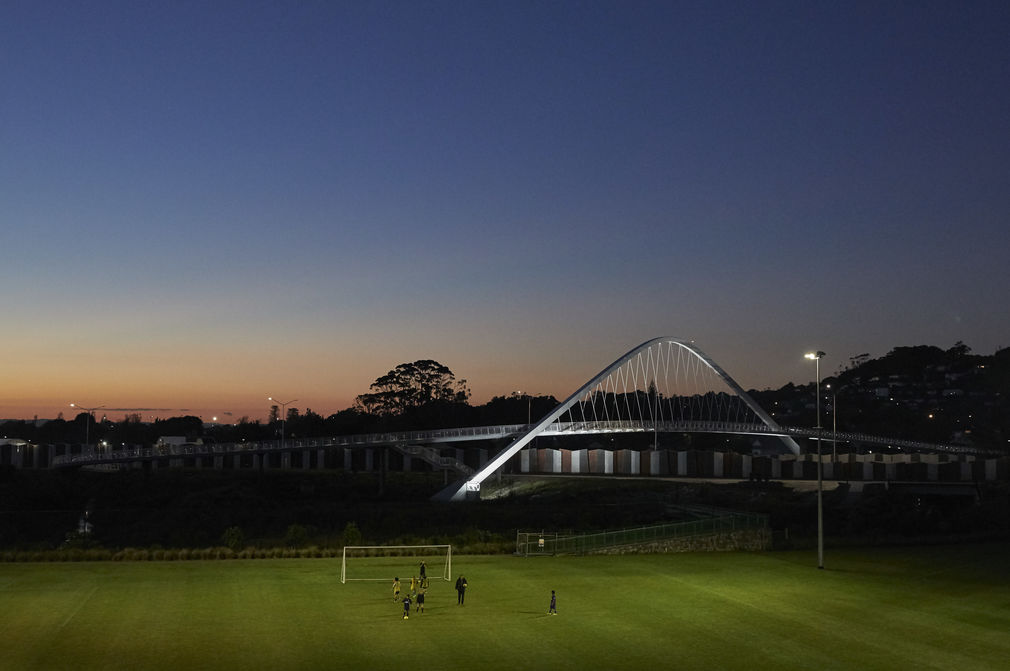
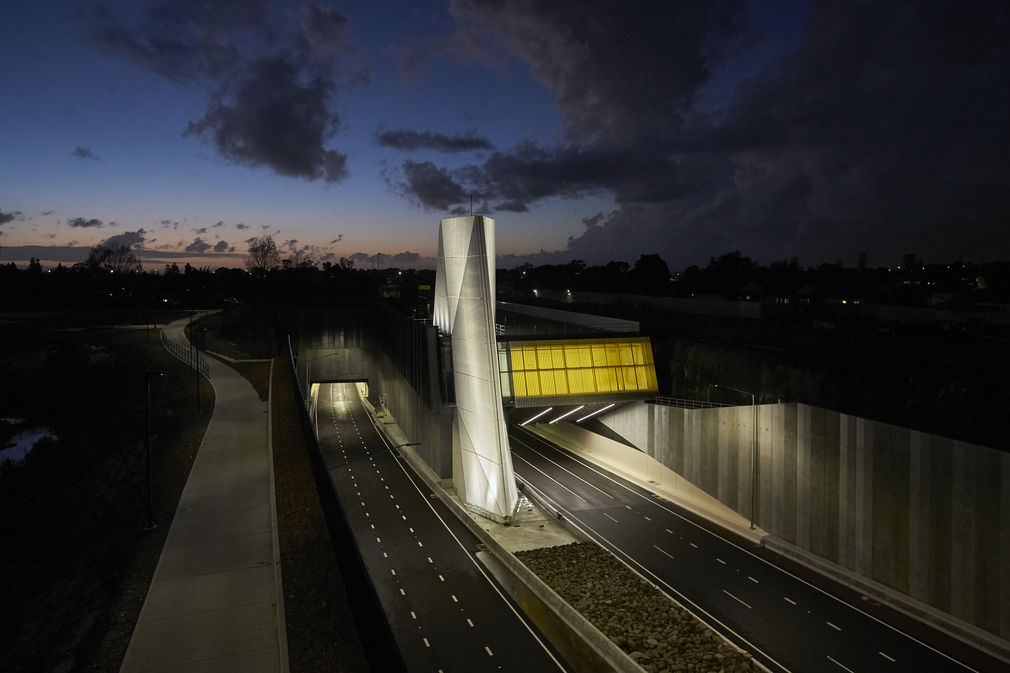
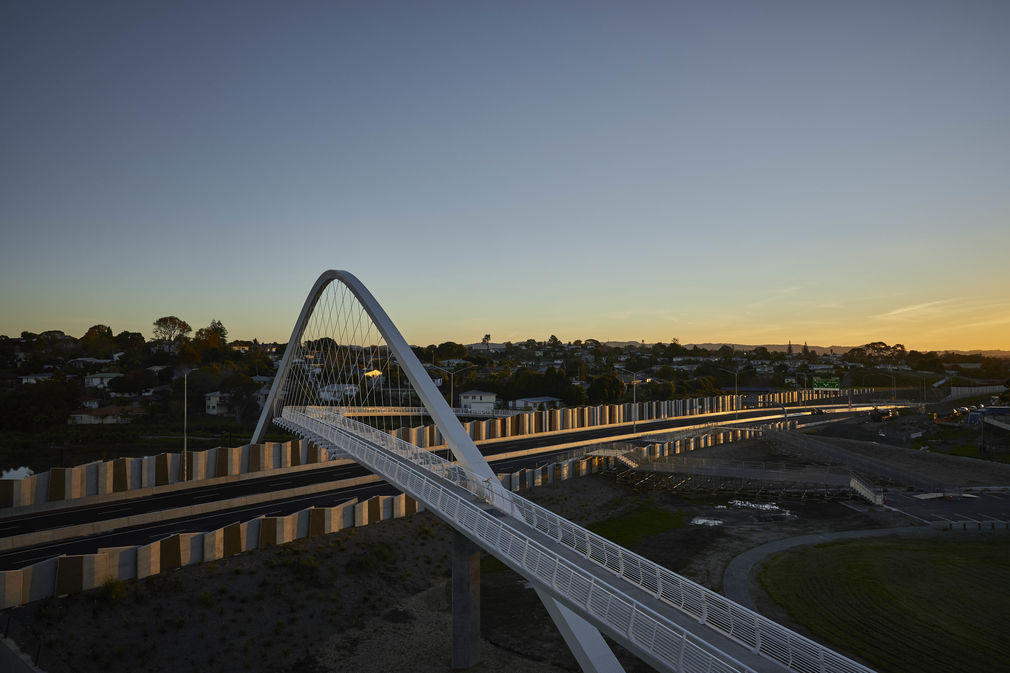
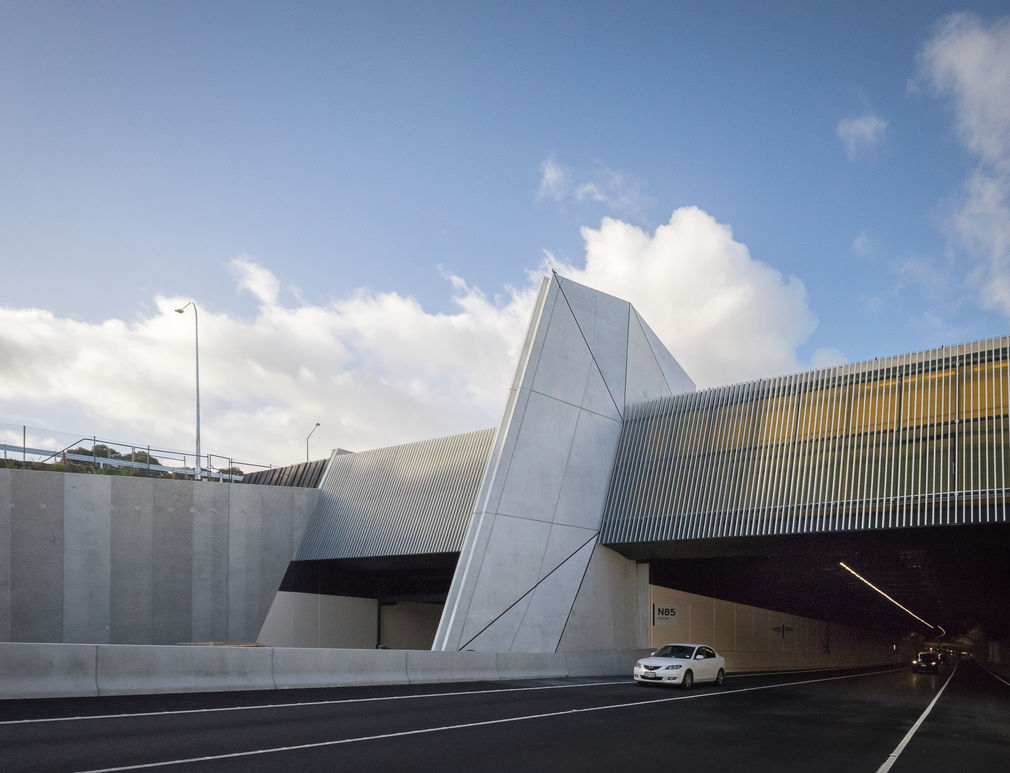
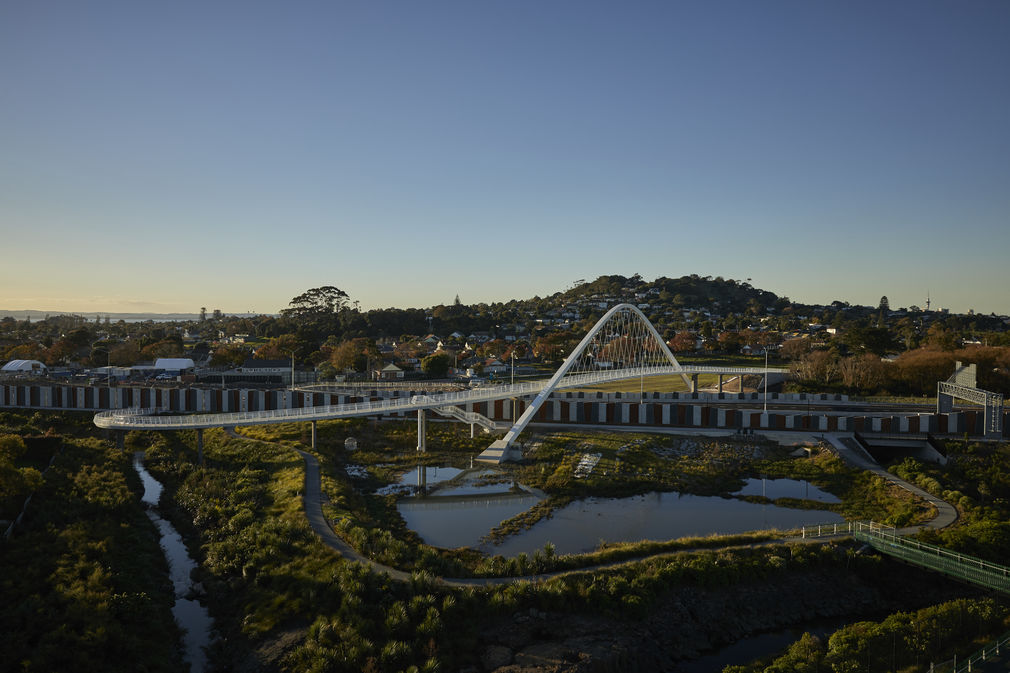

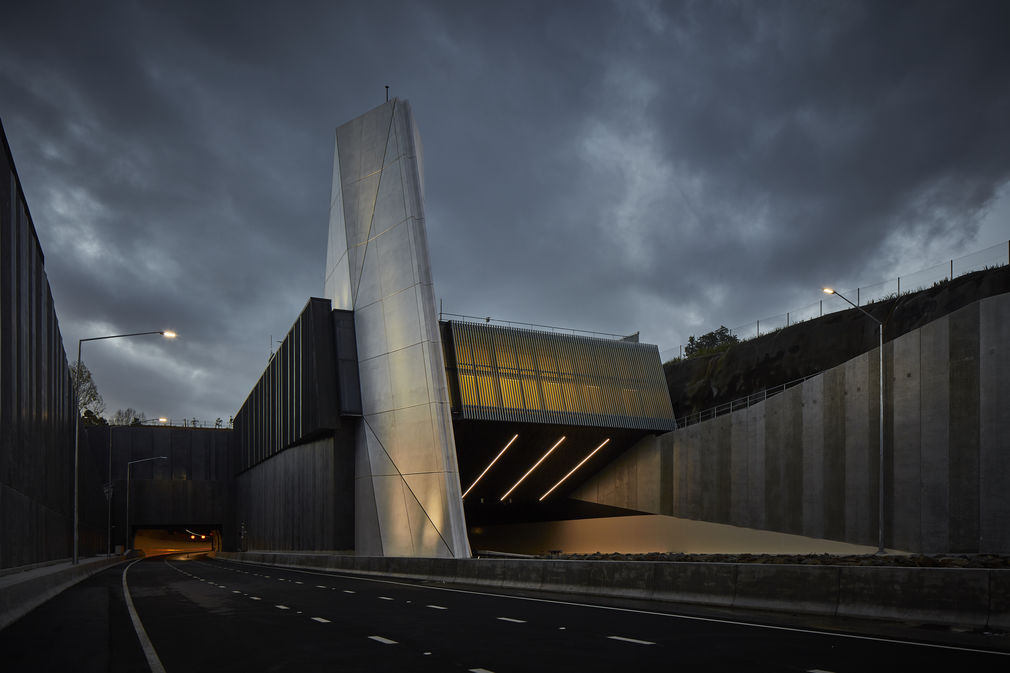


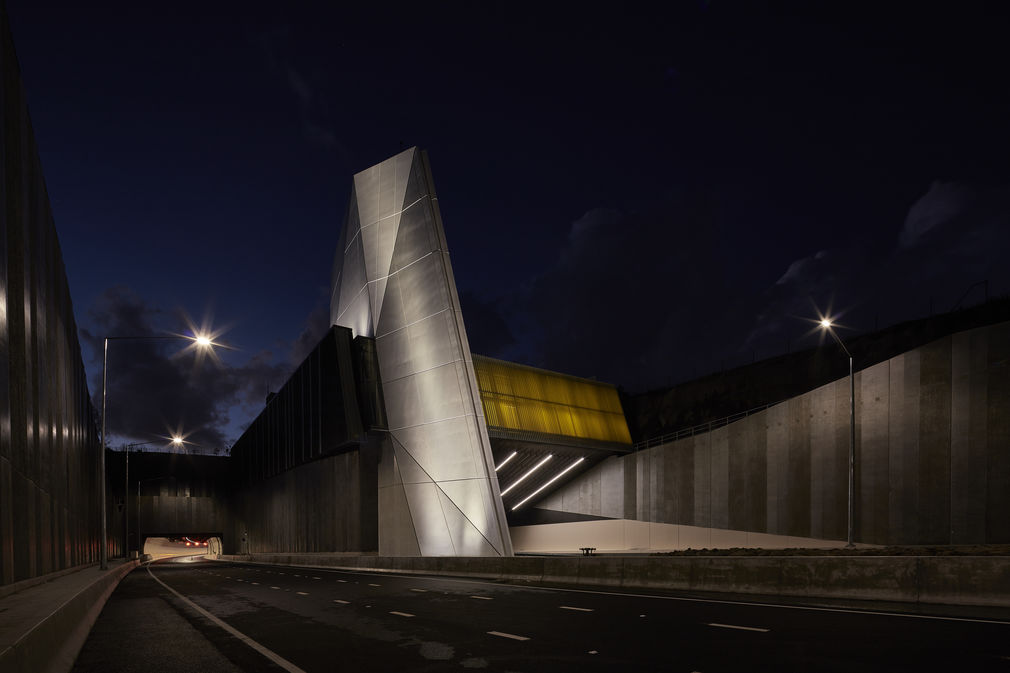
On the Waterview Connection project, context and people were factors as important as scale.
The two 2.5-kilometre parallel tunnels pass through some of Auckland’s most densely populated neighbourhoods – areas with important Māori ties to ancestral land and cherished views of water and maunga. The six-year process involved more than 10,000 staff, but critical to success were the “true experts”: the local community.
Unconventionally, the project put community, not cars, at the centre, with the design team holding fortnightly design sessions with community representatives that uncovered geological ties, cultural connections and shared histories.
This consultation, accurately described by a local magazine as “a model of how to consult and carry on”, was an exemplar of how to achieve a rigorous programme while preserving local connections and creating city-scale urban connections.
Many of the project’s key moments are monumental and sculptural: Te Whitinga, a pedestrian bridge, arcs elegantly over the highway between Mount Roskill and Owairaka. Underneath, a wetland area is surrounded by lush green spaces, waterways and new habitats for native birds. The tunnels themselves – and especially their entrances – were used as opportunities to reference Tamaki Makaurau.
The tunnel portals glow with diffused golden light, while the striated basalt walls of the interior reveal a geological layering of earth and stone that is a narrative of volcanic eruption. There are obsidian pou to acknowledge early Māori horticultural tools, symbols of strength and guidance and, at the Southern Entrance, two concrete artworks depicting Hinemairangi and Tamareia, folklore heroes who escaped into a lava tube to avoid capture, were created in collaboration with Ngāti Whātua Ōrākei and Te Kawerau a Maki.
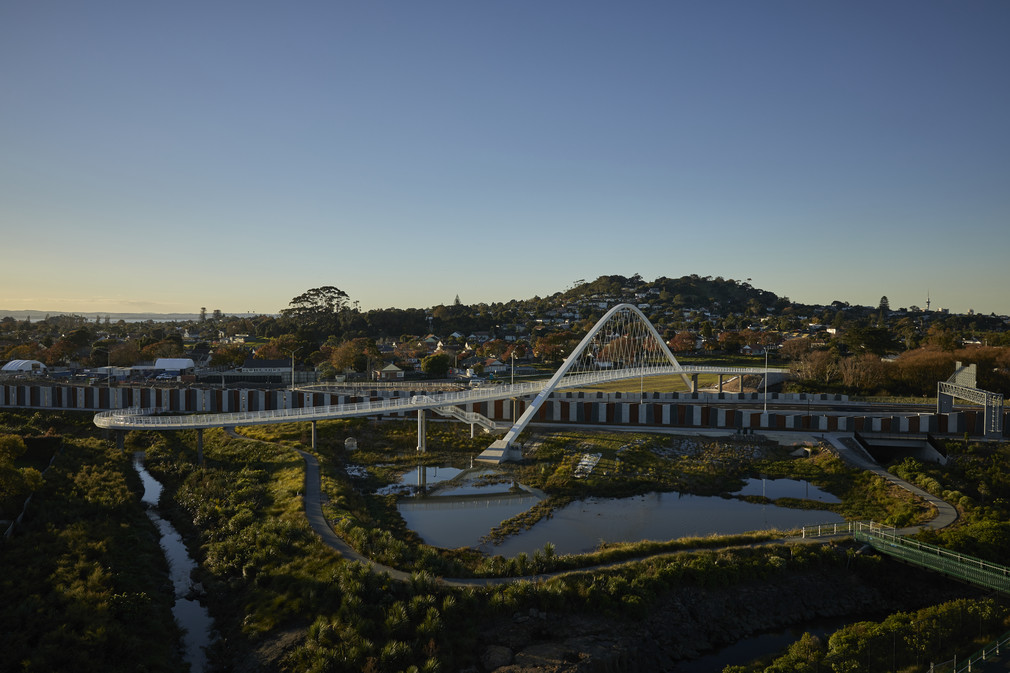
Over the course of the project, the Waterview community challenged the design team to reverse Auckland’s infrastructure model, to deliver without taking away. In doing this, what was originally conceived as an urban infrastructure project with transport-related goals has been transformed into a world-leading example of community engagement, research and consultation that has preserved and enhanced communities.